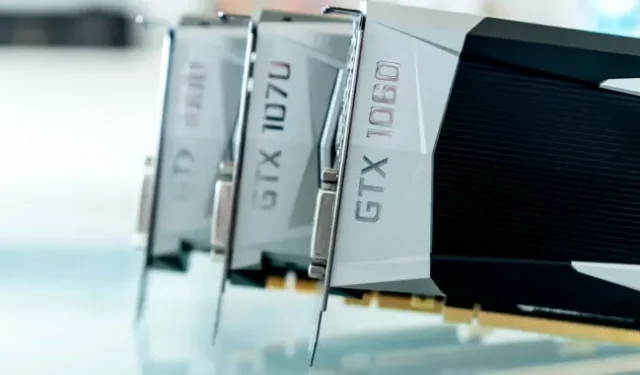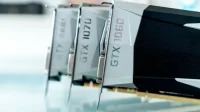Nvidia’s GeForce GTX 1060 received exceptionally good reviews when it was released in 2016, offering slightly better performance than previous generation flagships at a perfectly reasonable $250 price tag. PC gamers reacted accordingly. Within a year of its release, the 1060 became the most used GPU in the Steam Hardware and Software Survey, holding that position from June 2017 to October 2022.
The 1060 owes its longevity to a unique combination of factors – its initial cost, years of GPU shortages, and inflated prices for newer models like the RTX 3050 and 3060. The GTX 1650 finally supplanted the 1060. (The same shortage and price issues that kept the 1060 on top for so long also contributed to the continued availability and viability of the 1650 four years after its release.)
The nature of Steam’s statistics collection makes its data noisy; it may only collect data voluntarily provided by users who access and use Steam at the time the data is collected. This makes it useful for identifying general trends over time – CPU and GPU market share, the number of CPU cores in most systems, the approximate rate at which new versions of Windows are introduced – but not as good for measuring specific data points like “which particular GPU is the most popular? The GTX 1060 actually gained a share of the Steam data for September and October, which seems unlikely to us given the age of the 1060 and the continued improvement in availability and pricing for newer models.
However, it’s been so many years since any GPU other than the 1060 topped the charts that we thought we had some things that had changed in PC gaming in the last five years. If you bought the GTX 1060 when it first topped the Steam leaderboard and then went into hibernation until 2022, here are just a few of the things you’d notice (strictly in terms of PC gaming):
- All newer GPUs support hardware accelerated ray tracing, though performance still varies.
- The amount of graphics memory has increased. The 1060 came in both 3GB and 6GB versions, while this generation’s high-performance GTX 1080 and Titan GPUs came in 8GB to 12GB memory. Current GPUs come in up to 24GB, with 8GB or 12GB closer to the floor.
- AMD Ryzen processors have returned AMD competitiveness in the gaming PC market; AMD’s CPU market share in Steam data increased from 19.01 percent in June 2017 to 32.87 percent in November 2022. This success was not reflected in AMD GPU hardware, which dropped from 20 percent to 15 percent over the same period.
- Most PCs use processors with six or more cores. In mid-2017, almost all PCs in the Steam data used either two or four CPU cores.
- Fancy scaling technologies like Nvidia’s DLSS and AMD’s FSR 2.0 have made games more appealing when your GPU can’t render them at your monitor’s native resolution. DLSS doesn’t support the GTX 1060, but FSR 2.0 does, and if you’re still running the 1060, this is one way to get new games to run on it.
- Monitors have become more advanced, and technologies like adaptive sync, high refresh rates, and 4K have become much more common in newer displays. According to Steam, 1080p is still the most popular resolution for mainstream displays, although 1440p and 4K screens have become more popular since 2017.
- Fast SSDs are becoming increasingly important for game load times, thanks in part to a new generation of consoles that come standard with fast PCIe SSDs. It’s also cheaper than ever to get a decent 1TB or 2TB drive! This is good because there are more game installs than ever.
- For the first time in a couple of decades, there’s a third competitor in the GPU market – Intel’s Arc GPUs are actually decent despite bumpy development and launch times.
Will we ever see another standalone GPU become as popular as the GTX 1060 at its peak? Never say never. But recreating the conditions for its success – starting with the launch of the Nvidia RTX 4060, which beats the $250 RTX 3080 – doesn’t seem particularly likely right now.


